There is a long list of reasons for getting inked.
Some get them as art or memorials. Others get inked just to look cool or express who they are and what they are passionate about.
You can get any kind of tattoo art, regardless of gender, race, or background. Yet the artistic community itself is splintered along racial and ethnic lines. However, in Central London, tattoo culture seems to transcend such divisions, drawing people from all walks of life together in the shared experience of body art.
In fact, white people make up the majority (59.0%) of the tattoo industry, making them the most frequent ethnicity among tattoo artists. Hispanic or Latino people comprise 21.4% of the population, whereas Black or African American people make up only 10%.
Light skin is the ideal canvas for both coloured and black-and-white tattoos; some tattooists even say they prefer working on paler skin.
While it’s true that some colours will pop more on some skin tones than others, we believe that any skin tone can rock a colourful, vivid, and intricate tattoo design when done by a talented artist.
Pearl Lemon Tattoos is founded on the idea that tattoos look great on people of all skin tones. Our tattoo artists are trained professionals familiar with tattooing on all skin colours, including the darker shades.
If you want advice on a tattoo colour, contact us.
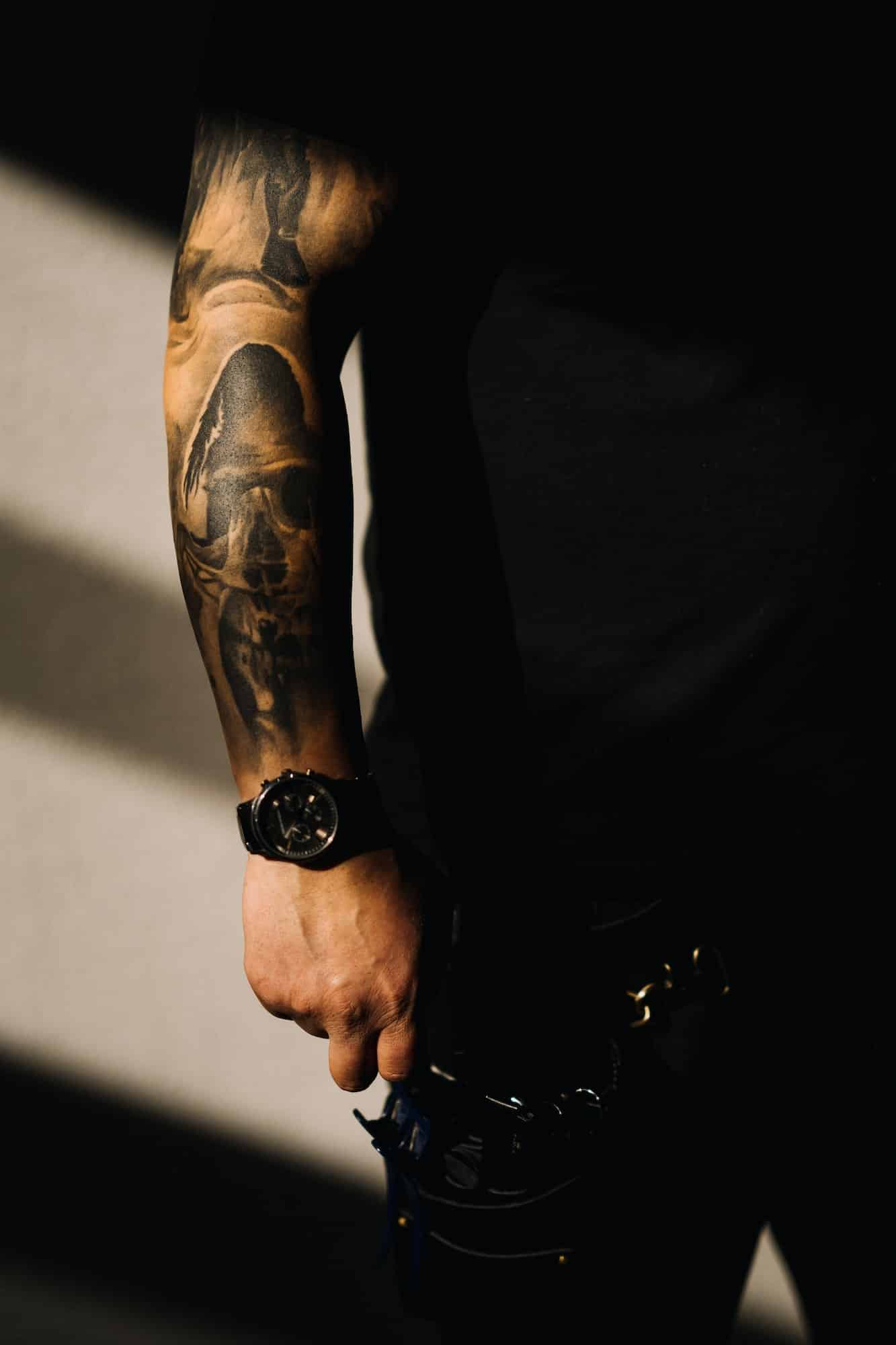
One’s skin is regarded as a blank canvas in the field of tattooing, especially in Central London. Of course, everyone’s skin isn’t the same colour. Thus the final look of a coloured tattoo will vary depending on the person’s skin tone.
Tattoo artists from Pearl Lemon Tattoos, located in Central London, carefully study how they can ink a client’s body part. At the end of the day, it’s an art form and a medical procedure combined, so it needs the expertise and knowledge to perform it.
Take a quick look at what our artists consider before inking our clients, and be amazed at the amount of knowledge they hold.
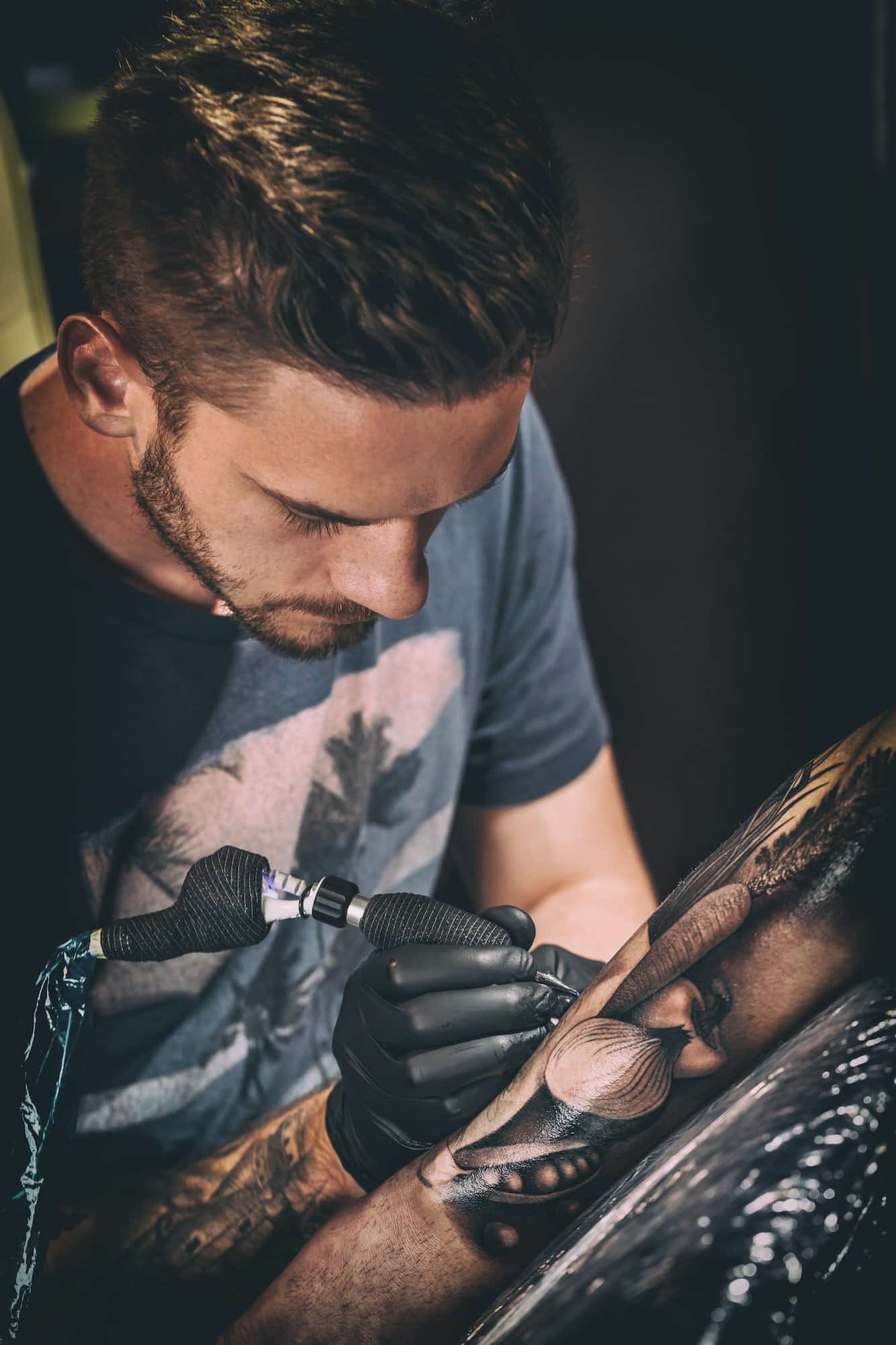
The first thing they consider is the skin tone and the undertone.
The colour of your skin is your skin tone. Skin tones can be tan, porcelain, or bisque. Meanwhile, undertones can be either warm, cool, or neutral. Finding a colour that works for your skin tone involves finding an ink colour that complements your skin’s undertone. If you’re in Central London, consider visiting a specialty store for a wider range of options.
Those with bluish, pink, or ruddy skin are said to have cool undertones. The veins of such people often look blue.
Warm undertones characterise yellow, peach, or golden skin tones. They typically have green veins.
An even complexion is characterised by undertones similarly toned to the skin’s surface. People with even complexions don’t have a distinctive vein colour.
The second thing they need to be knowledgeable about is body chemicals.
Apparently, your skin is incredibly complicated, and the colour you have results from many interactions taking place under your skin.
Three biological chemicals have a role in determining your skin tone: Red haemoglobin, the brown/red-yellow sun protection agent melanin, and orange-yellow carotene.
The amount of melanin in your dermis is what ultimately defines your skin tone. Less melanin means a paler skin tone and more noticeable blue veins.
The more your melanin content, the more noticeable your green veins will be and the warmer your skin tone will be. Your undertone is different depending on how much haemoglobin and carotene you have.
The last thing they need to factor in is the tattoo ink.
Your tattoo ink, like your haemoglobin, has a melanin coating. There are three distinct layers to your skin: the epidermis (the outermost), dermis (the middle layer), and subcutaneous fat layer (the deepest).
Tattoo ink and melanin sit in the dermis layer, but melanin is located higher up in the dermis than tattoo ink.

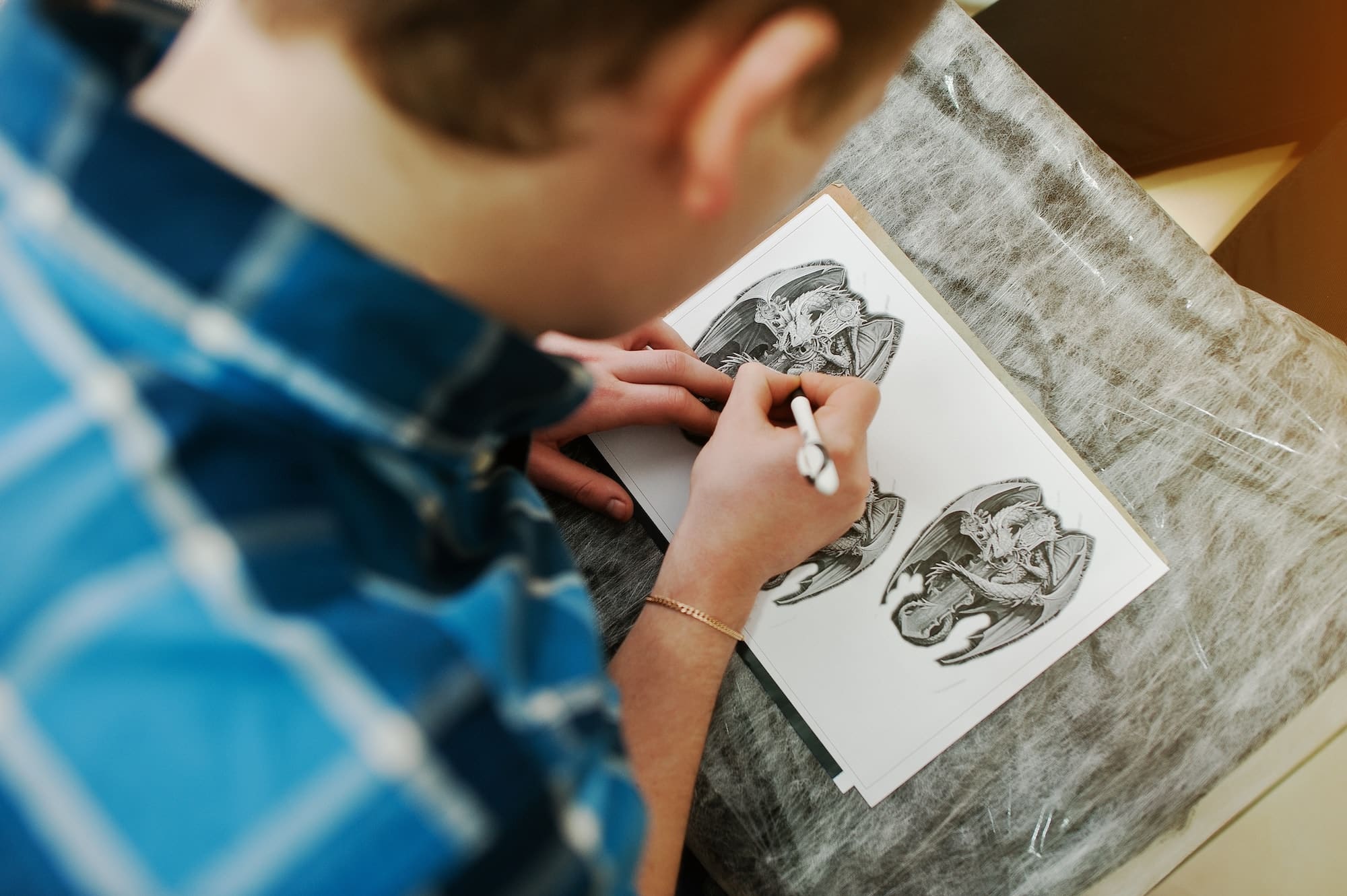
This means that any ink pigment will show up reasonably well even if you have a low melanin content (a cool undertone). Still, bright blues and reds will show up exceptionally well because they complement your natural skin undertone.
Just like the blue of your veins is transformed into a greenish colour when combined with the brown, red, and yellow of melanin, the ink pigment will take on the colour of the melanin if you have a high concentration of it.
Therefore, if you want your tattoo to really stand out on your black skin, our artists recommend using ink with warmer pigments that go with the level of melanin in your skin.
Keep in mind that a darker skin tone takes on colour precisely the same as lighter skin. The amount of melanin in your skin is what really affects your skin tone.
Nowadays, tattoos are made by repeatedly inserting a needle into the skin at a pace of about 100 per second after being dipped in the tattoo ink. The tattoo artist injects the ink into the dermis, which is 1.5–2 mm below the skin’s surface.
This is a standard process in all types of skin.
Some people believe that tattooing people with darker skin tones is more challenging since their skin is thicker or tougher.
In reality, this is a common misconception peddled by tattooists who haven’t taken the time to learn how to design tattoos for people of colour properly.
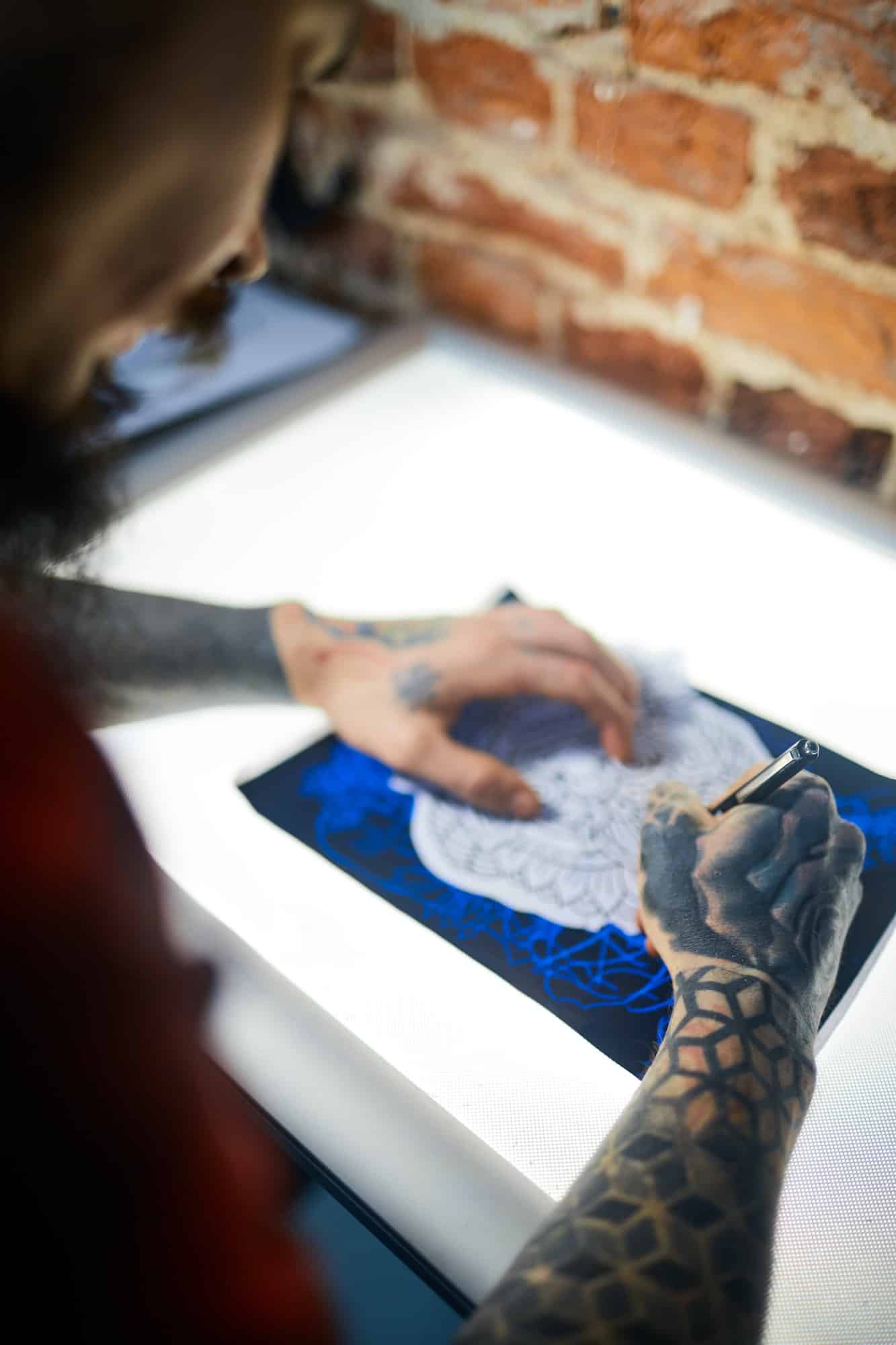
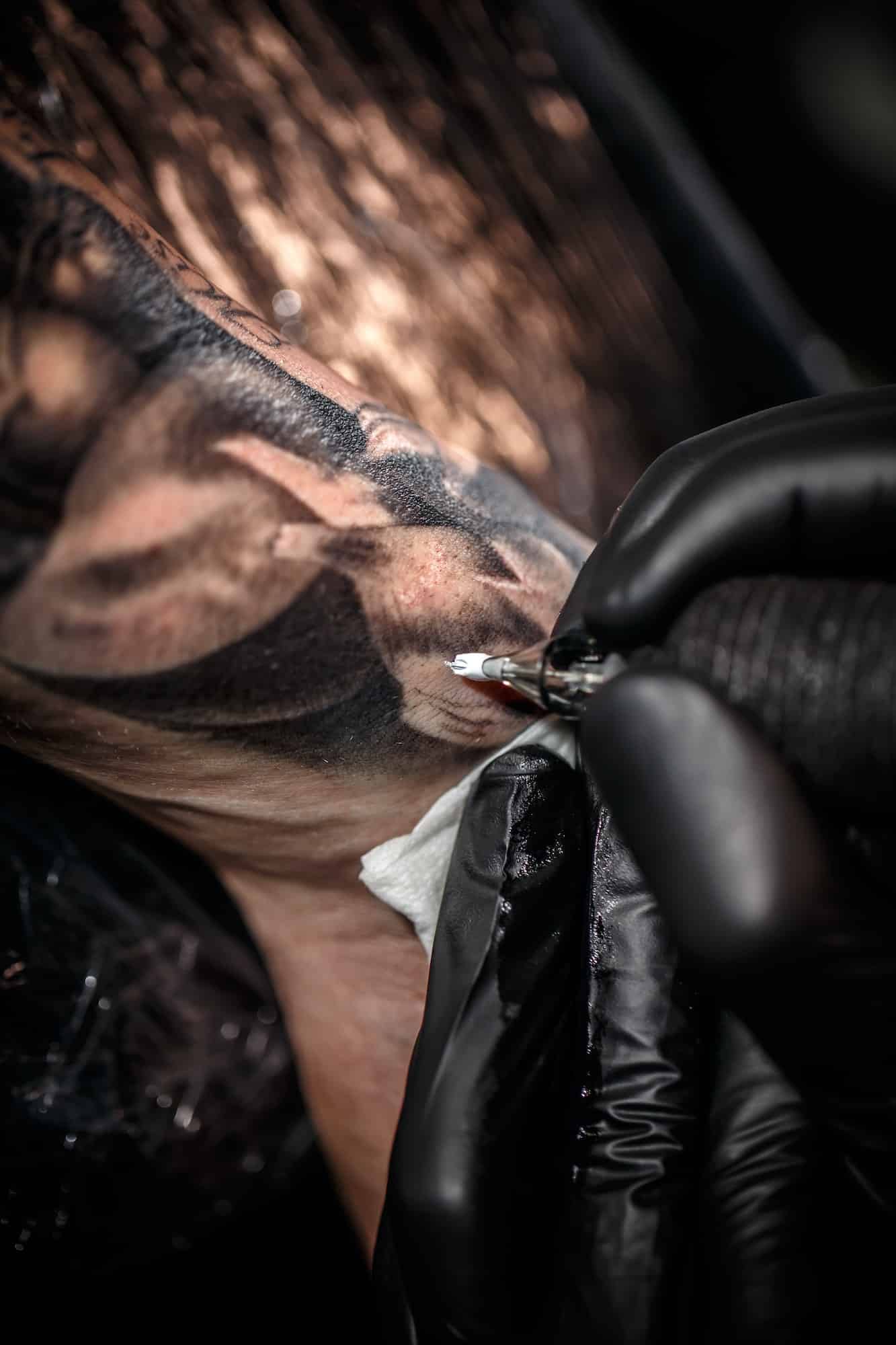
It may be difficult for the tattoo artist to see the ink on a very dark skin tone, but this can also mean less work for them. In general, larger designs are preferable because they provide more distance between the dark ink and the skin, which helps bring out the details.
After the session, the damaged skin swells, heals, and finally develops scar tissue. Ink particles can settle deeper into the dermis with time, making the tattoo appear less vibrant.
Whatever your skin colour, this method will yield the same results. But tattooists who aren’t familiar with working with a wide range of skin tones may accidentally cause damage to the skin by going over it too many times or applying the ink too deeply.
Finding an artist you like can sound like a daunting task, but with the help of social media, you can narrow down the options.
Never be shy about asking for examples of previous work or more samples of their portfolio if you have doubts about a designer’s familiarity with working with colour on dark skin.
Many tattoo photographs on social media are shot when the tattoo is still fresh, but those with a darker skin tone should seek out healed samples of an artist’s work. You’ll be able to see how the colours have faded and if there’s been any scarring as a result.
The next step after finding a suitable artist is to schedule a consultation with them. A face-to-face meeting is essential before scheduling any tattoo appointments. Share your plan and see if your personalities mesh over the conversation.
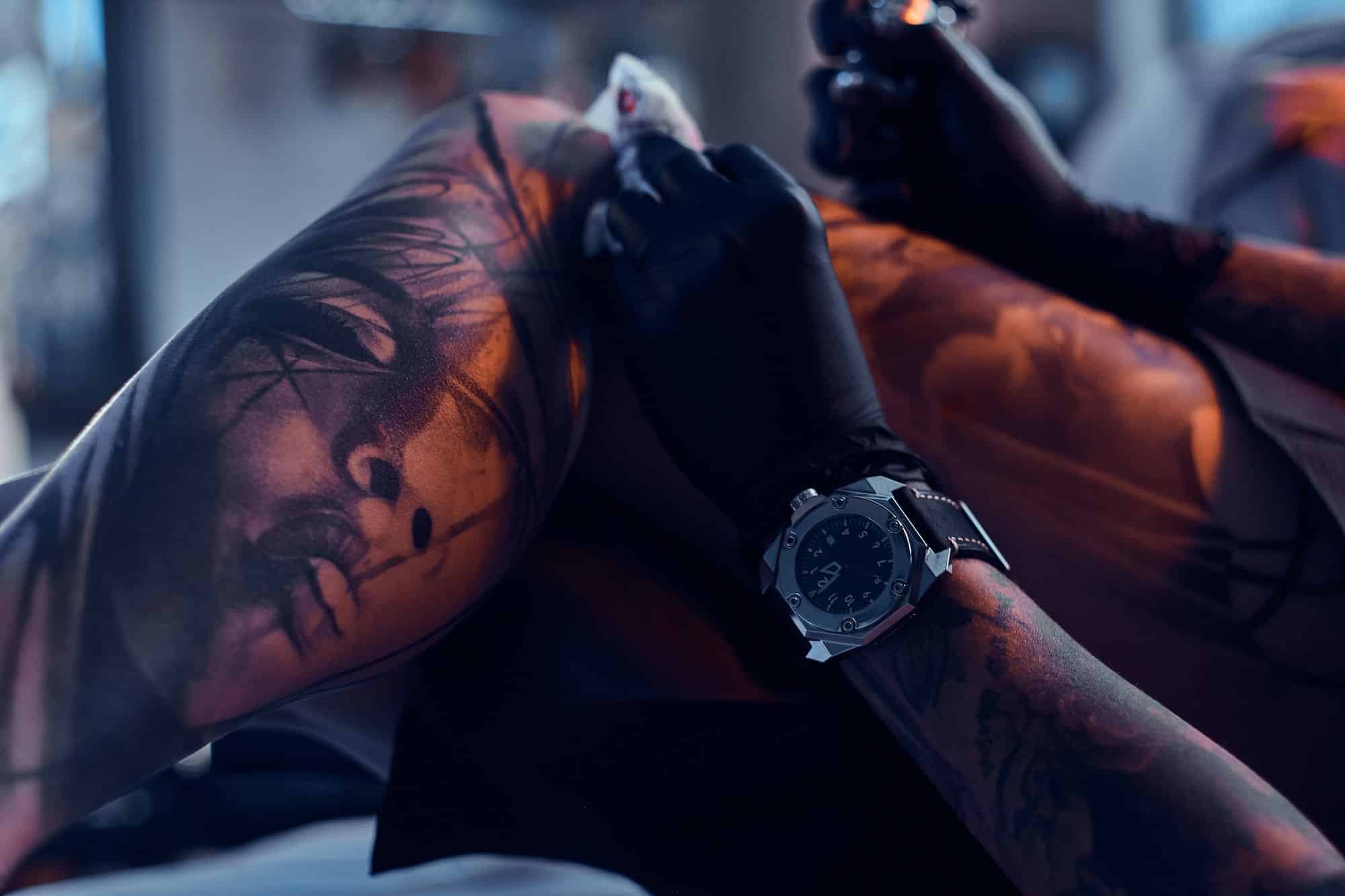
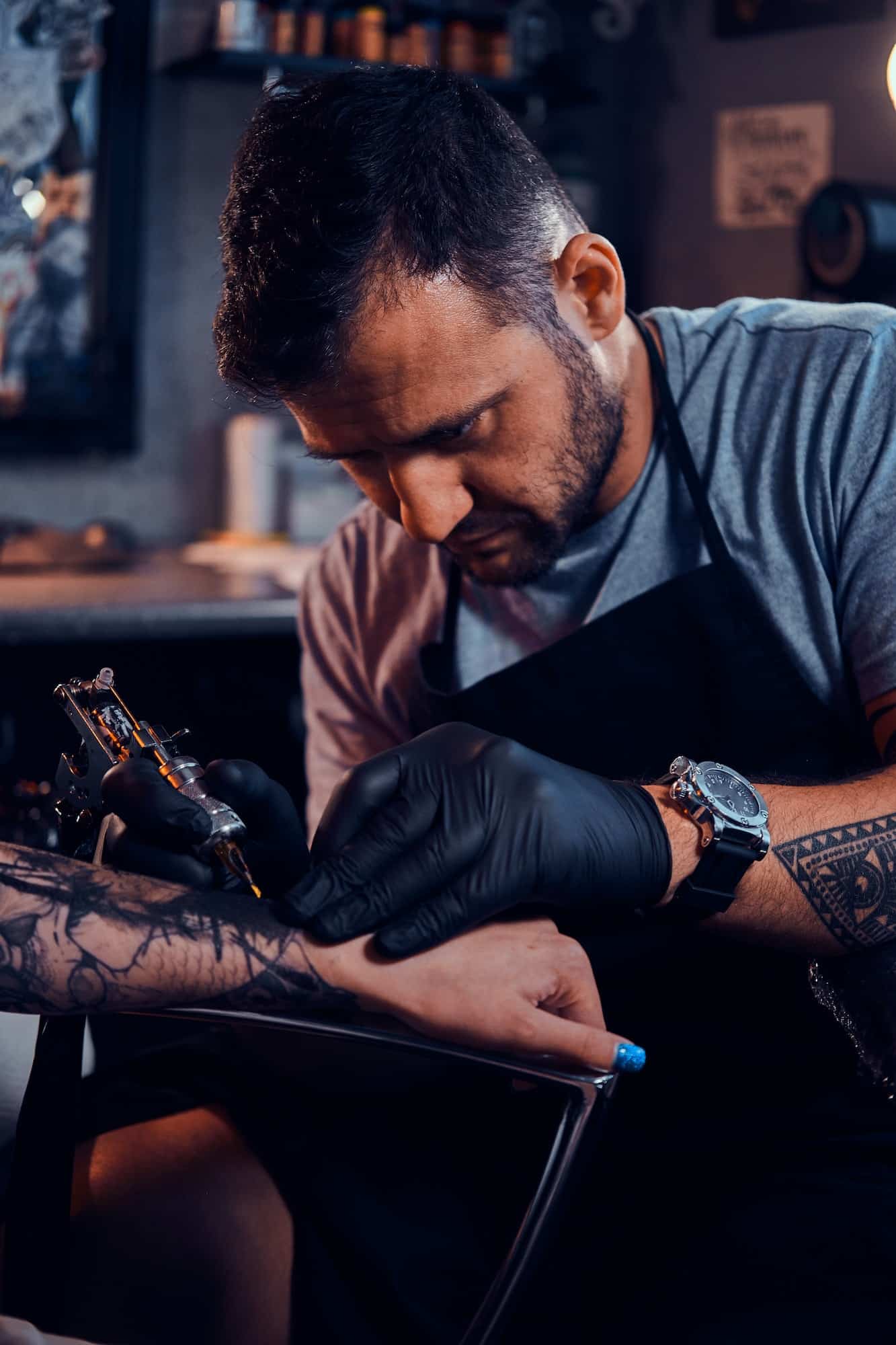
Meeting with the artist for a consultation is the perfect opportunity to get a sense of them and ask any questions you may have.
Many tattoo parlours are like any other service provider; they’ll tell you whatever you want to hear to win your trust.
If an artist feels nervous or uncomfortable with your questions and requests, that’s a red flag.
You can choose a style or a design for your future tattoo. Still, it’s important to assess a tattoo artist’s knowledge, experience, and how well they work with the various shades of black skin.
Luckily, you don’t have to go through all that because with Pearl Lemon Tattoos, and you can get the best service you need regarding tattooing. We guarantee that you’re in good hands.
Always go with a tattoo artist who has experience with people of colour and comes highly recommended.
There are plenty of tattoo artists at Pearl Lemon Tattoos who can help you out.
Our master tattoo artists are professionals and have worked with clients of all skin tones.
Seeking a design consultation? Get in touch with us.